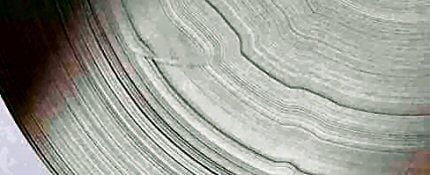Avoiding roll defects at the winder - causes and solutions
Jul 14, 2020
The type of paper defects winder operators most frequently encounter are called structural defects, because they relate to the forces and stresses that hold a roll’s structure together as a mechanical entity. At times, when these internal forces are at odds and such adverse conditions as relaxations, layer-to-layer slippages, collapses and internal stress distributions appear, structural paper defects are born.

Most roll defects are caused by poor nip or tension.
Most structural defects occur either because of an incorrect level of stress or from very high localized stresses. The two main sources of this stress are the nip, directly or through the agency of nip mechanics, and wound-in tension. Of these, uneven nip and localized slippage and creep are the cause of most structural defects.
Starring
Starring is a common structural defect that appears as a collapse near the core of the roll, similar to a fault caused by slippage of geological formation.
Caused by uneven stress distribution inside the roll, the starring or collapse of paper is initiated once a portion of the roll, which is wound with a low wound-in tension, increases and a ring or hoop of tightly wound paper causes a collapse of the softer wound interior. A highly unstable situation, virtually any outside blow can collapse the highly stressed ring into its softer foundation.
While most collapses are usually local and involve only two or three lines, more severe collapses can damage the paper in the fault area and require the roll be unwound. A starred roll is very difficult to unwind because it loses its concentricity. Because of severe tension fluctuations, the operator has to reduce the speed of the secondary process. If the roll is too damaged to rewind, recycling it is the only alternative.
Soft start
The foundation of any roll is the first layers of paper on the roll’s core. If those first layers carry a low-level wound-in tension, a soft start condition exists. Problems associated with soft starts include:
- The bond between the paper and the core breaks, causing a loss of coupling with the unwind break.
- Starring develops.
- The roll tightens during unwinding, taking up loose paper at the core. This layer-to-layer slippage causes crepe wrinkles and breaks over the unwind core chucks.
The causes of localized or intermittent soft starts are many and varied. Some of the more common causes include:
- Very high or low rider roll loading at the core.
- Misaligned rider roll.
- Worn out rider roll chains and sprockets.
- Low front drum torque difference.
- Low unwind tension or a very slow increase of tension from stall to the running level.
Corrugations
Simply put, corrugations are accordion-like paper folds that form when the web, strained beyond its yield point, cannot return to its original shape.
Corrugations can form on the papermachine, coater, calender stack or winder. They are caused by a combination of an uneven distribution of weight across the web and an uneven nip, which create strain.
There are steps a winder operator can take to help prevent the formation of corrugation defects:
- Wind rolls with as little wound-in tension as possible.
- Control wound-in tension with front drum torque, as opposed to rider roll relieving.
- Use wide oscillation to reduce the intensity of nip forces which cause formation of corrugations.
Three operational changes can be made to reduce corrugations on a long-term basis: improve the quality of the paper, use a single drum winder, or make the two-drum winder more tolerant to caliper and hardness variations.
Crepe wrinkles
Crepe wrinkles are crease-like paper defects that occur mostly in newsprint and LWC papers. Typically 1/8-inch to a 1/4-inch wide, crepe wrinkles generally form as a result of paper slippage in poorly built-up rolls and excessive caliper variation of the sheet. Once the excessive and localized layer-to-layer slippage is momentarily blocked or interrupted, the wrinkle is formed. Paper that is severely weakened in creped areas is doomed to break in successive processes.
Crepe wrinkles can be found virtually anywhere in a roll, but primarily in the areas below a splice after a web break. They also form at the outer diameter of the roll during the rewinding process, as well as near the core.
Winder operators can effectively reduce the frequency of crepe wrinkles by remembering a few key rules:
- Maintain controlled deceleration to prevent snapoffs.
- Create a tight start to the roll to prevent formation of J-lines during unwinding.
- Beware of core notches and steel caps used on core ends.
- Watch for high stress concentrations over core chucks.
For more information on avoiding roll defects contact your Valmet representative.